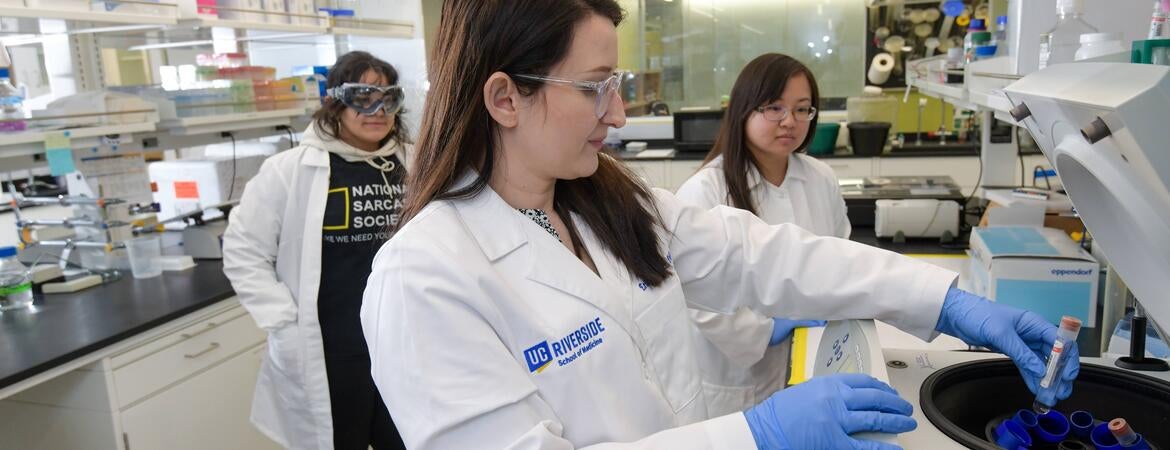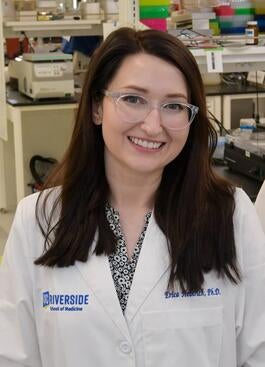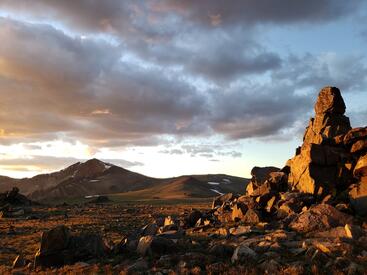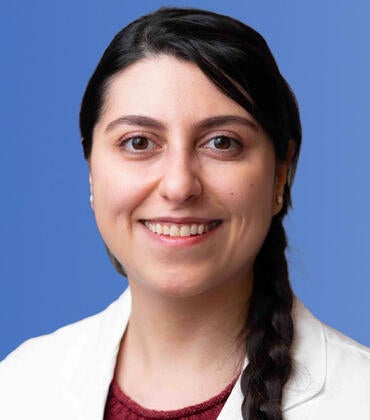
What can people living in the mountains of Peru teach us about people dealing with COVID-19 related oxygen deficiency? Actually, quite a bit.
High-altitude exposure leads to hypoxia, or low levels of oxygen in the body—a condition that’s present in COVID-19 and many other medical conditions. Erica Heinrich, Ph.D., an assistant professor of biomedical sciences, studies the body’s adaptations to oxygen limitation to learn more about hypoxia-related diseases.
“Systemic or tissue hypoxia are common in many scenarios and diseases, including tissue injury or infection, cancer, or lung disease,” Heinrich explained. “Oxygen limitation plays a role in all of these cases.” By comparing different populations' unique physiological adaptations to high-altitude living and examining sea-level residents’ responses to visiting higher altitudes, she aims to identify beneficial hypoxia responses and apply these mechanisms to COVID-19 and other disease treatments.
Her research has many applications to COVID-19 specifically. “Hypoxemia in COVID looks a lot like hypoxemia at high altitude,” Heinrich explained, referring to low levels of oxygen in the blood.

These similarities prepared Heinrich for some of the surprises of COVID-19, placing her in an ideal position to study the new disease. Early in the pandemic, some patients had low blood oxygen levels but didn’t feel short of breath, a condition called “silent hypoxemia.”
“It was presented as a mystery in the literature for a year or so,” Heinrich recalled. But she’d already seen the phenomenon in her lab. “When I heard about silent hypoxemia, I was not surprised at all,” she said. “To many of us studying the control of breathing in humans, it was normal, and explainable by principals of respiratory physiology.”
She also noticed that cytokine storms in COVID-19 patients, an increase in inflammatory markers in response to the infection, resembled some measures her lab had made in healthy participants traveling to high altitudes. These observations motivated Heinrich to see how she could contribute to understanding and treating COVID-19.
Since 2020, her lab has expanded its research to examine the impact of COVID-19-related hypoxia on immune function and control of breathing in collaboration with several Biomedical Sciences faculty, including experts in immunology and virology as well as local clinicians. They’re also interested in investigating whether air quality in the Inland Empire impaired lung function and affected COVID-19 outcomes. As part of their efforts, they have identified COVID-19 variants circulating in the community and are tracking long-term impacts of the disease.
Local community collaboration
The COVID-19 research requires close collaboration with local community members. “It’s been really rewarding to work so closely with individual participants, because they get to ask me questions about the research we’re doing and inform the research questions that we pursue,” said Heinrich.
She added that engaging with the community is something UCR does well in general. “You’re not just going out to the population you work with, collecting data, leaving, and then they never hear anything from you again,” she said. “For this study, we’ve had a continuous one-on-one conversation with participants. It’s been amazing to work this way.”
Her collaborative COVID-19 study also includes upcoming outreach events to further engage community members. Heinrich said her team will share their findings and ask participants about their experience with the disease to discover future research questions. “We can sit here and guess all day about what we think patients are experiencing, but we need to hear from them,” Heinrich said. She added that events like this will demonstrate to participants that members of their own communities are researching these issues and want to connect with them.
From the mountains to COVID-19
While COVID-19 is a new research direction that didn’t exist when Heinrich came to UCR, it’s a natural extension of the high-altitude work that drew her to Riverside in the first place.

Located around 1,100 feet above sea level, the campus likely wouldn’t come to mind when considering high-altitude research. However, UCR has access to the Barcroft Station, a University of California facility sitting at 12,470 feet in Bishop, CA. The station is part of the White Mountain Research Center, one of 41 natural reserves in the UC Natural Reserve System.
“There's really no better location for us to conduct research in high-altitude medicine,” said Heinrich. It’s approximately a six-hour drive to reach the station, but the trip is even longer from most other UC campuses. “Part of the reason I was excited to come to UCR is because we're so close to this site where much important work in the field of high-altitude physiology has been done,” she said.
UCR’s BREATHE Center, which supports research ranging from climate to air pollution and health, is another reason Heinrich came to the school. It has attracted faculty like Heinrich who specialize in pulmonary physiology, air quality, and lung inflammation. “The Division of Biomedical Sciences is rich with world experts in immunology and inflammation who we can collaborate with to learn more about how hypoxia impacts inflammation and immune function,” said Heinrich. “There’s no better place for us to be.”
Just like with her COVID-19 study participants, one of Heinrich’s favorite parts of her high-altitude research is getting to know the people in her studies, often students they recruit from campus or individuals who live at high altitude in Peru. Of course, compared to COVID-19 community studies, this research looks a bit different. “It's a big adventure that we all go on together,” Heinrich said of their trips into the mountains. Her favorite memories involve looking at the stars with study participants after a day spent examining people’s hypoxia responses at altitude.
“I just love the lung”
Heinrich’s research investigates many aspects of hypoxia adaptation, yet centers around breathing, a topic where her excitement is clear. “I just love the lung,” she said, adding that it’s one of the most important organs in the body. “Any time that I get to extend my love of the lung to students, I’m happy.”
The lung is particularly elegant, Heinrich explained, because of its ability to adapt to metabolic needs in different animals to deliver higher rates of oxygen when necessary—an area she understands well as a comparative physiologist who studied control of breathing in insects earlier in her career. But the lung, and people’s breathing reflexes, can also adapt within humans by providing sufficient oxygen even when parts of the lung are damaged. It also regularly adapts, without individuals even thinking about it, to improve oxygen delivery at high altitudes.
Heinrich’s research background, both from studying hypoxia in insects to humans and applying high-altitude research findings to COVID-19, shows that understanding responses to hypoxia can lead to advancements in a wide range of biomedical applications—with more still to come. She plans to expand her research to the relationship between sleep apnea, cognitive function, and altitude and to further examine individual differences in hypoxia responses.
“After studying the control of breathing in different high-altitude populations and learning how flexible these essential reflexes are, I never looked back,” Heinrich said. “It’s been a fascinating scientific journey.”



